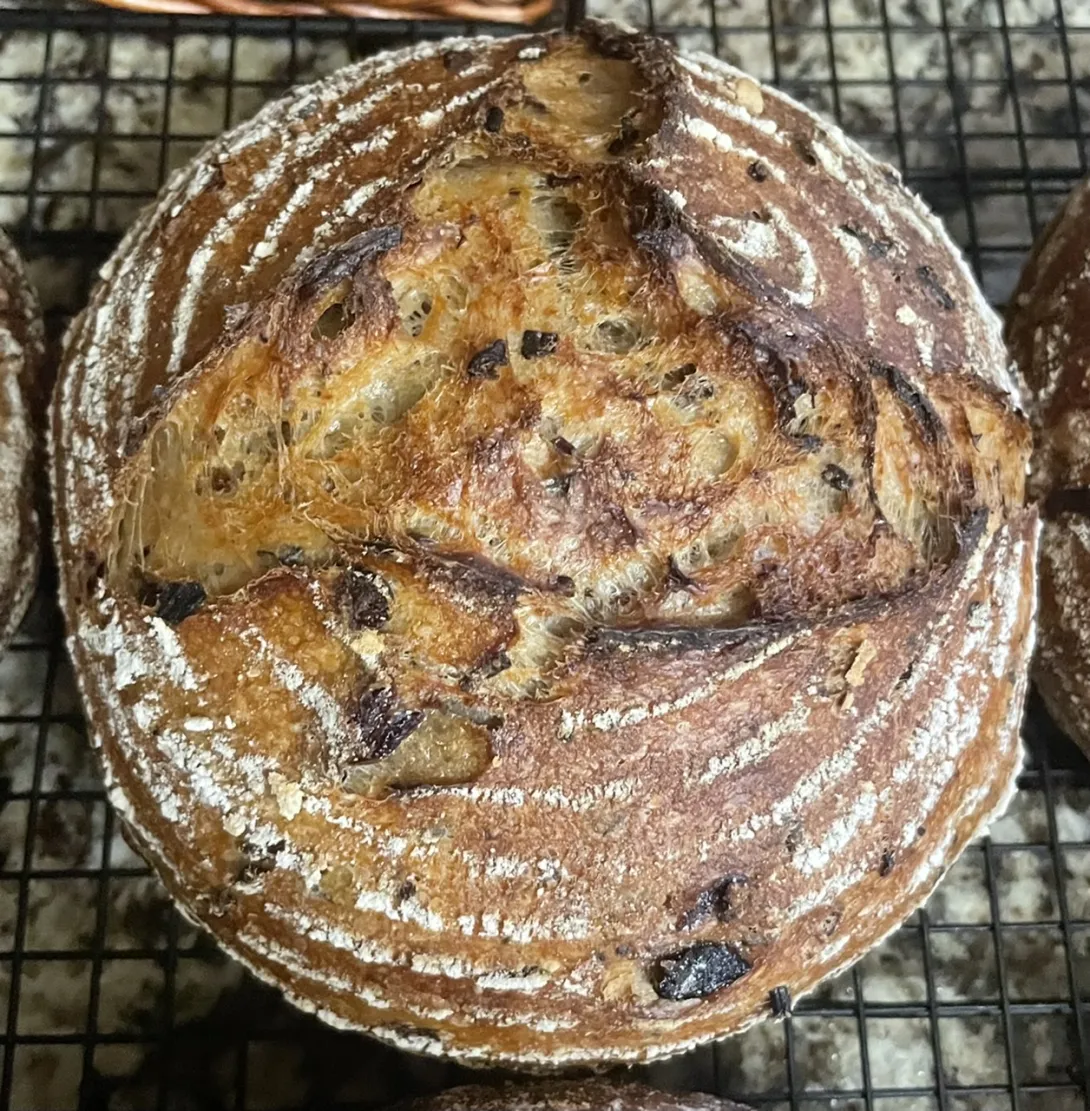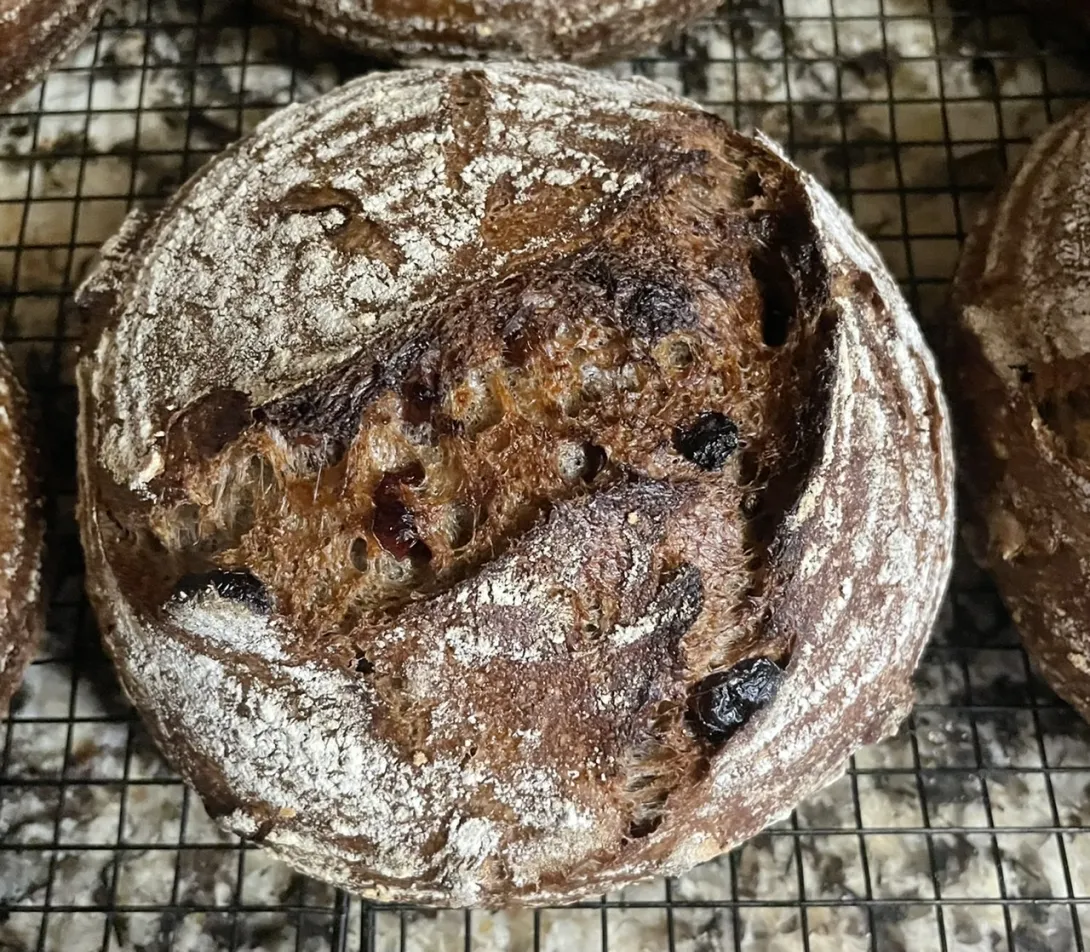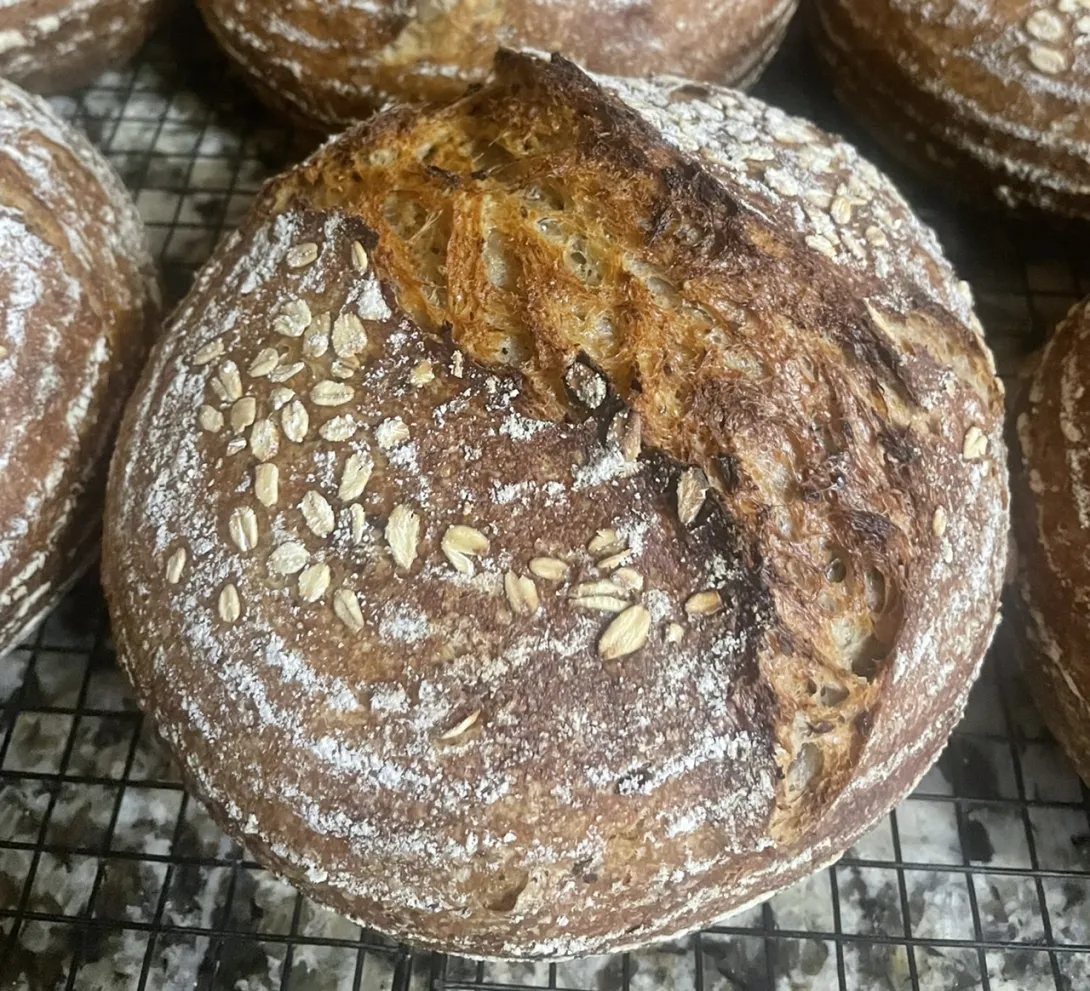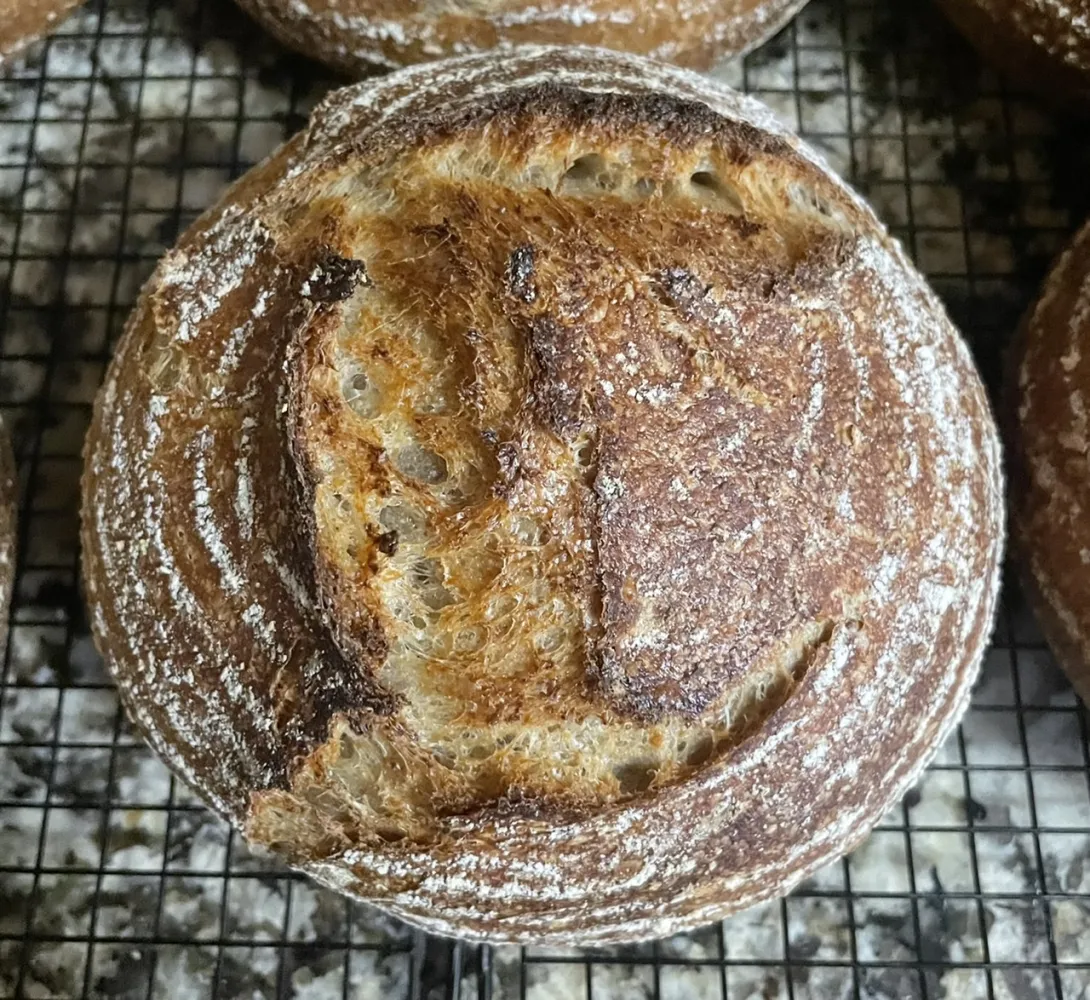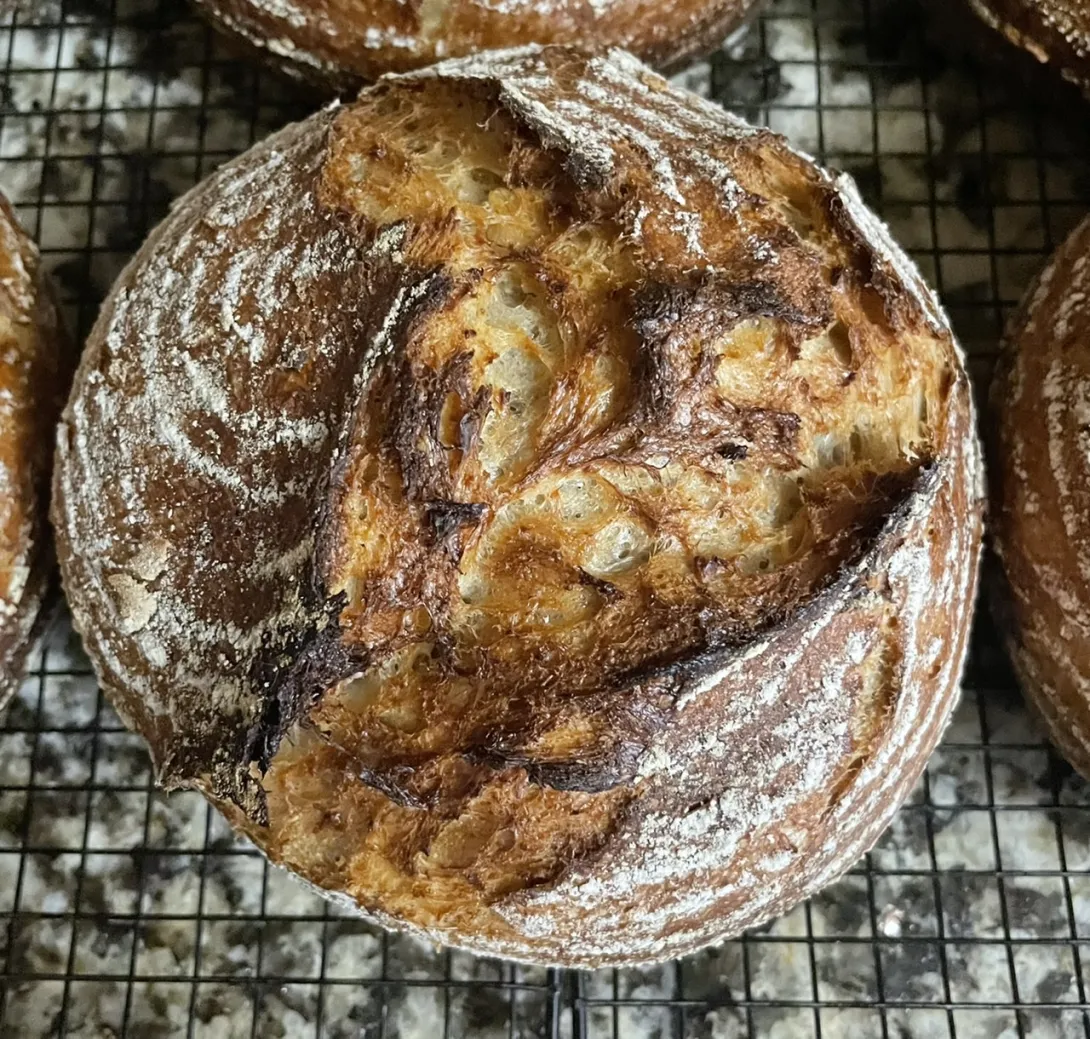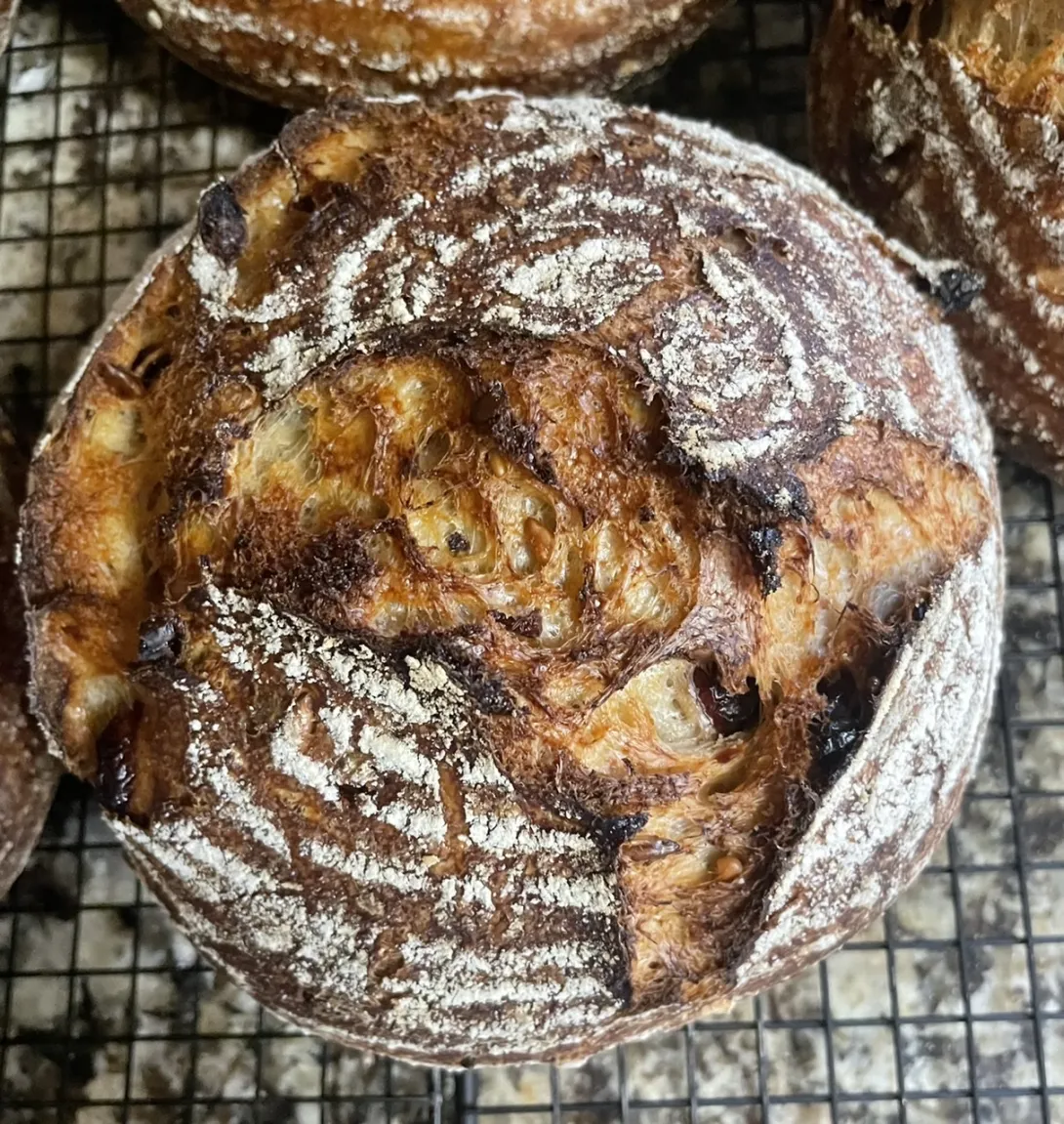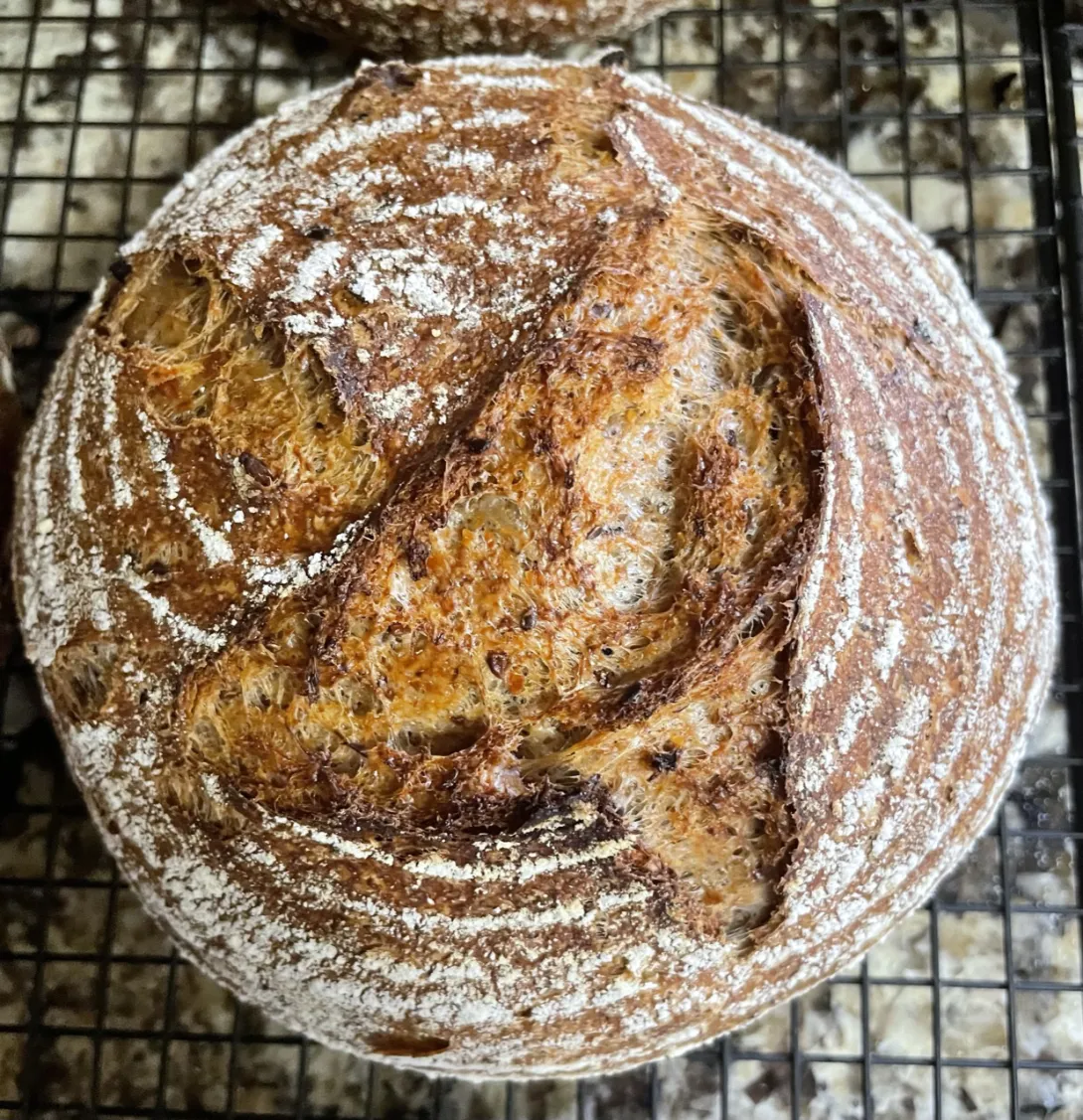Heart Healthy Sourdough
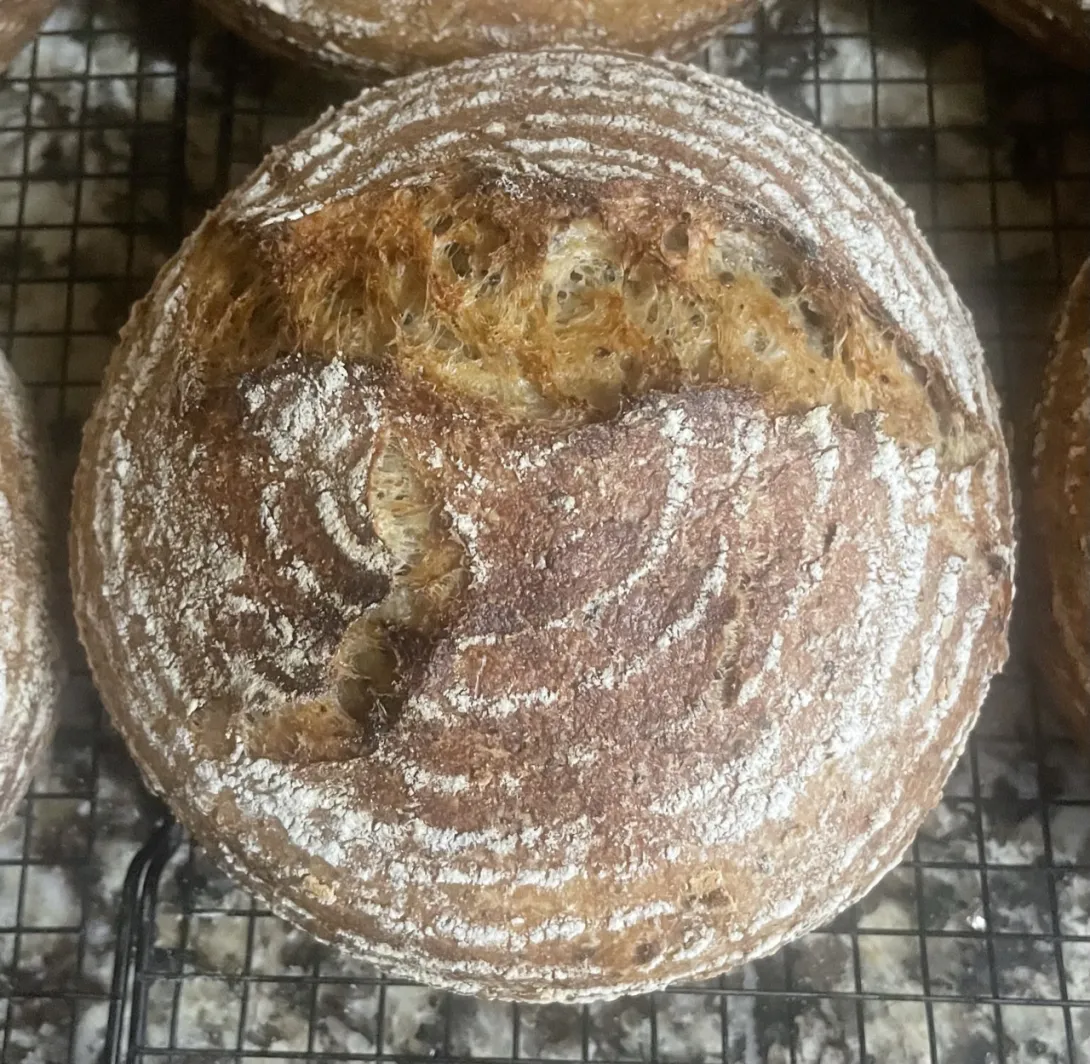
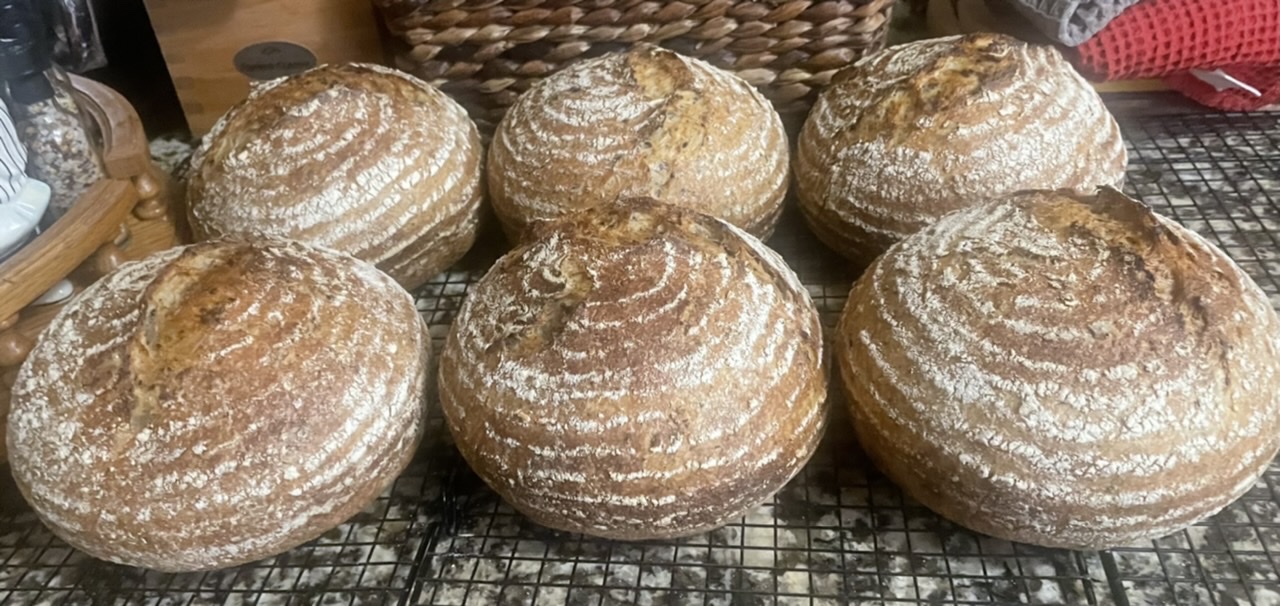
Recipe
Makes 3 loaves
Porridge
150 g rolled oats
300 g water
Dough
700 g Strong Bakers Unbleached flour
200 g freshly milled whole grain Spelt flour (200 g Spelt berries)
100 g freshly milled whole grain Kamut flour (100 g Kamut berries)
50 g freshly ground flax seeds
25 g black sesame seeds
700 g water + 25 g
22 g salt
30 g yogurt
